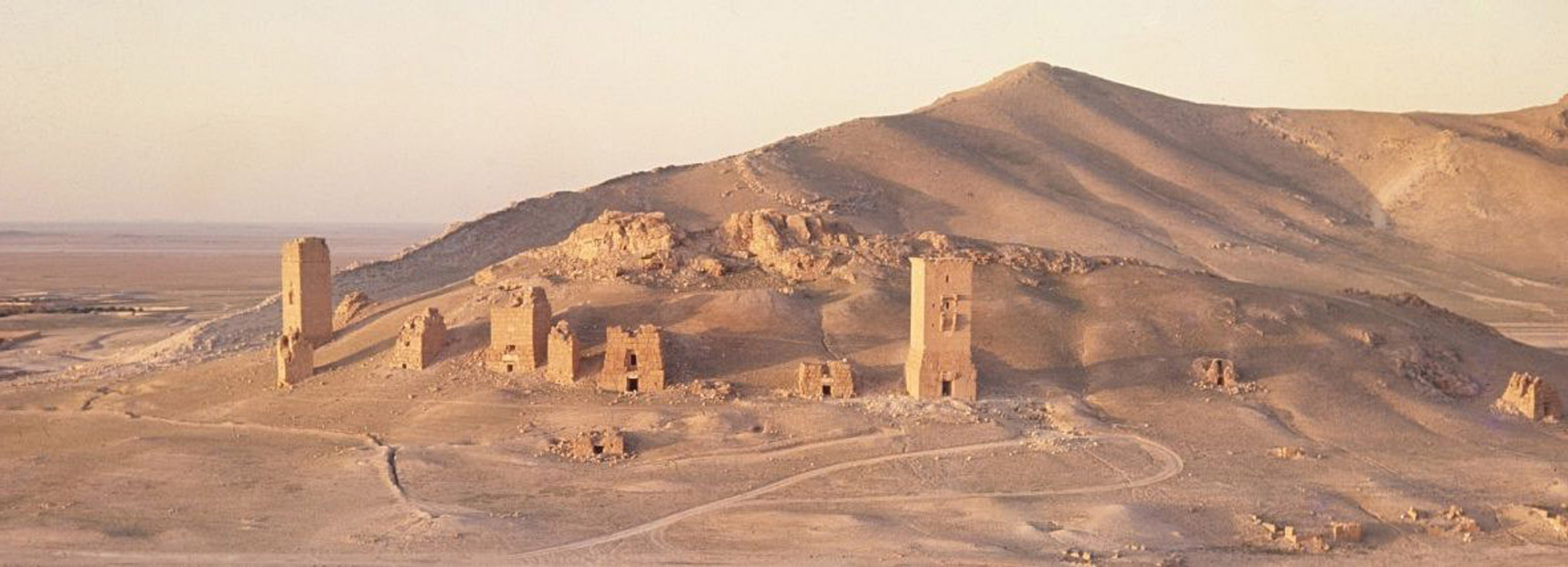
- Home
- Explore the site
- Urbanism and architecture
- The necropolis
Like all ancient cities, Palmyra is surrounded by necropoles, four of which are particularly important: the Valley of Tombs to the west on the road towards Emesa, the northern necropolis, the least well studied, the south-east necropolis beyond the palm grove, and the south-west necropolis south of the Efqa spring. All have several types of collective tombs, except perhaps the south-east necropolis, which has only hypogea. The city also had cemeteries for individual tombs, and their stelae have been found in large numbers.
The funeral towers
There are three types of collective tombs. The oldest are the funerary towers, of which several remarkable examples were destroyed in the autumn of 2015, such as the tombs of Atenatan (9 BCE), Kitot (40 CE), Jamblique (83 CE) and Elahbel (103 CE). These buildings had several hundred niches for the dead (loculi) over four or five floors decorated with carved and painted ceilings.
Hypogea
The construction of the towers ended in the first quarter of the 2nd century. They were then replaced by underground tombs (hypogea) with entrance stairs, three T-shaped galleries and hundreds of loculi. They were sometimes probably too large for a single family, as inscriptions have been found recording the sale of one or more parts of the hypogea, including to people who were not members of the owners' families.
Temple tombs
Finally, towards the end of the 2nd century, some of the city’s leading figures had palace tombs or temple tombs built, including Tomb 36, the most luxurious of all, and Tomb 86, located in the city itself, at the northwest end of the great colonnade.





